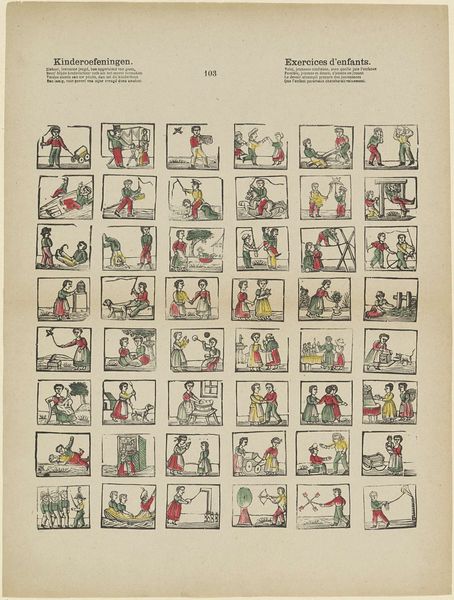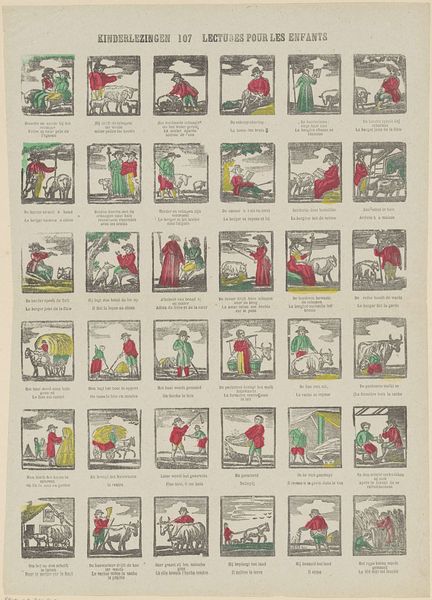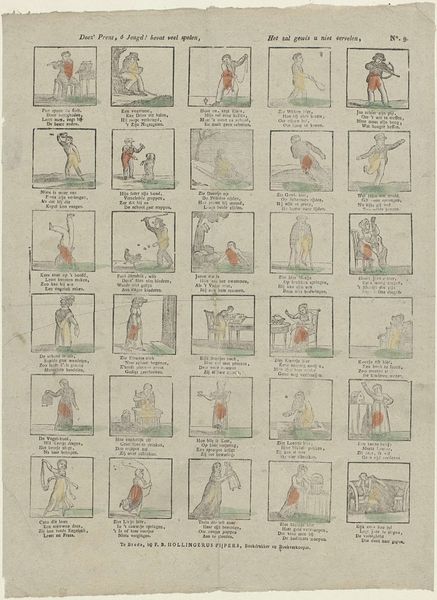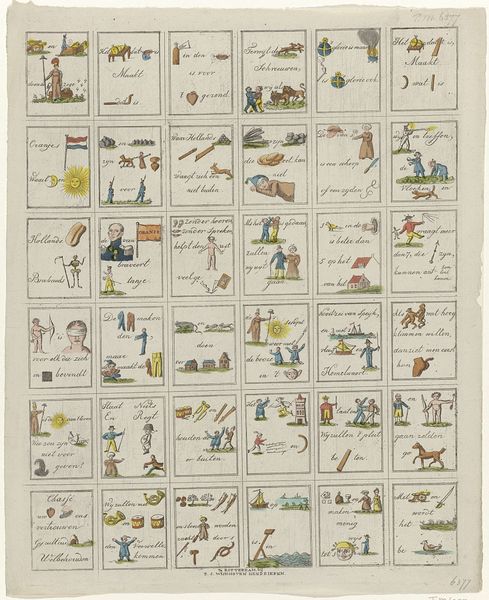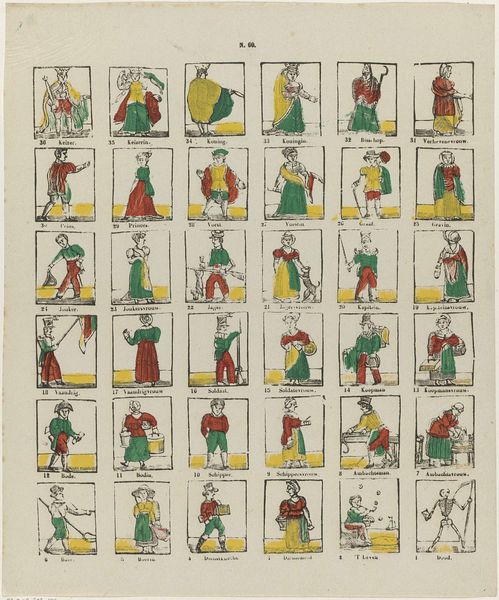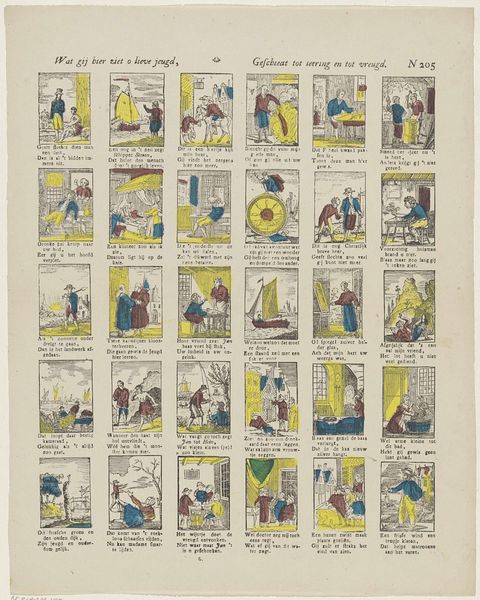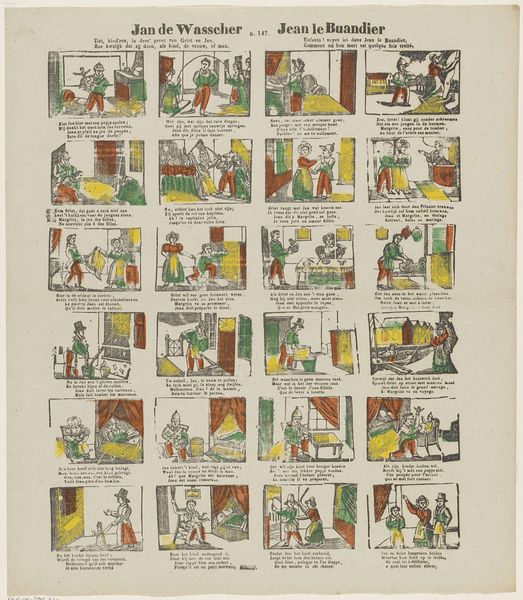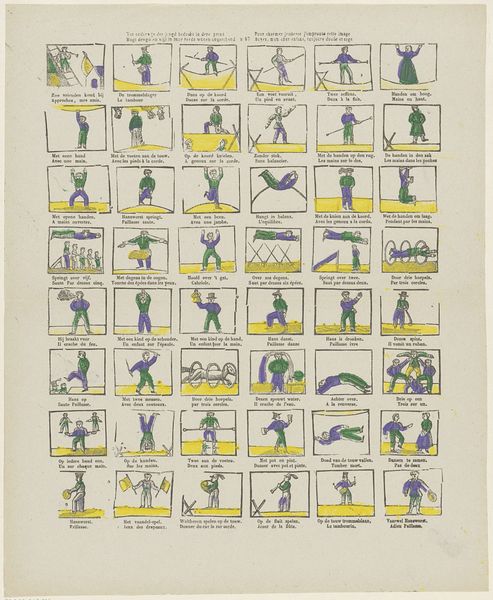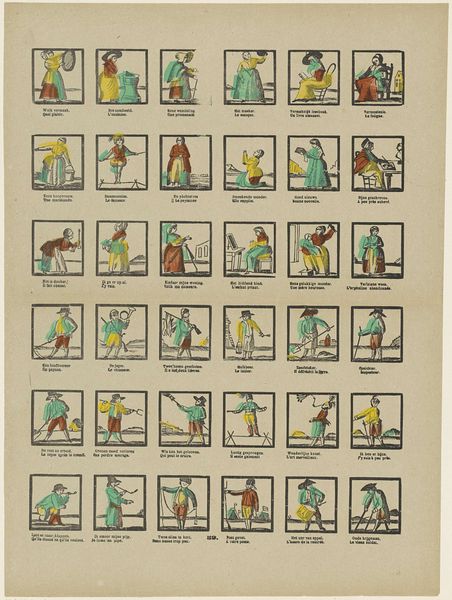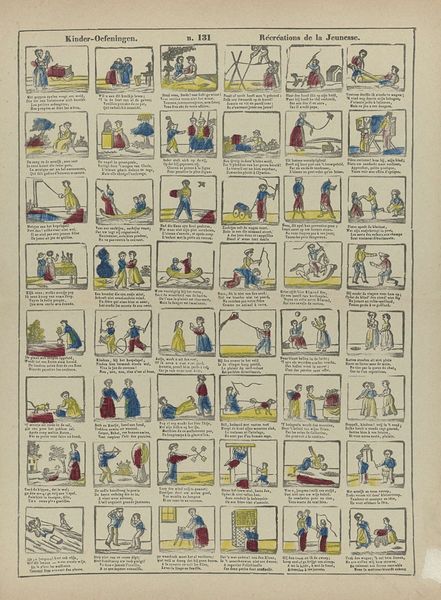
De boeren en der herdren leven, / En wat hun veld en akker geven, / 't Vermaak, de winst door 't nutte vee, / Deelt u, o jeugd! dit prentsel meé 1833 - 1900
print, engraving
comic strip sketch
narrative-art
old engraving style
landscape
cartoon sketch
personal sketchbook
sketchwork
ink drawing experimentation
folk-art
pen work
sketchbook drawing
genre-painting
storyboard and sketchbook work
sketchbook art
engraving
Dimensions: height 396 mm, width 329 mm
Copyright: Rijks Museum: Open Domain
Curator: Wow, this piece just hums with the quiet rhythm of country life! It’s giving me storybook vibes mixed with a deep connection to nature's simple joys. Editor: Indeed. We’re looking at an engraving created sometime between 1833 and 1900, credited to Glenisson & Zonen. It's titled, rather wonderfully, "De boeren en der herdren leven, / En wat hun veld en akker geven, / 't Vermaak, de winst door 't nutte vee, / Deelt u, o jeugd! dit prentsel mee." Quite a mouthful. Curator: Can you translate that title? Because, even without understanding a word, I feel like it speaks of the bond between the land, the people, and the younger generation. Editor: Roughly translated, it speaks of the lives of farmers and shepherds, the yield of fields and soil, the pleasures and profits from livestock shared with the youth through these prints. Looking at it, the piece seems divided into little vignettes, each depicting a moment from rural existence. Curator: Exactly! It's almost like a visual poem, capturing everyday moments from planting and harvesting to tending animals. I love the raw quality of the lines and the slightly faded colors—there's a real sense of history there. Editor: The composition definitely uses a grid-like structure to compartmentalize the illustrations; a series of panels contain each individual scene, all surrounded by Dutch text in top. Curator: I get this comforting, almost nostalgic feeling from this print, though I wonder, who was it aimed at exactly? A keepsake for those moving to the city? Or something educational, perhaps? Editor: Well, folk art like this often serves multiple purposes, straddling decoration, education, and cultural memory. There is an idealized portrayal of the agricultural world at work here. And that’s important. Curator: There’s beauty in its simplicity. It celebrates the small moments, doesn't it? Editor: Indeed. Seeing it today offers us a quaint window into the values and visuals of rural life in the 19th century. The rigid formal qualities, in this instance, work as an affirmation for our subject matter. Curator: Thanks! That gives me something to ponder on. Editor: It provides a narrative glimpse into our historical memory. Thanks for the chance to view it with you.
Comments
No comments
Be the first to comment and join the conversation on the ultimate creative platform.
